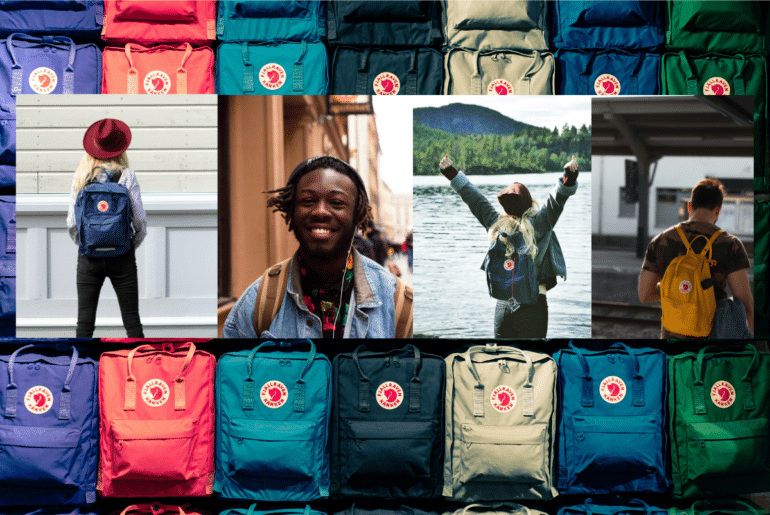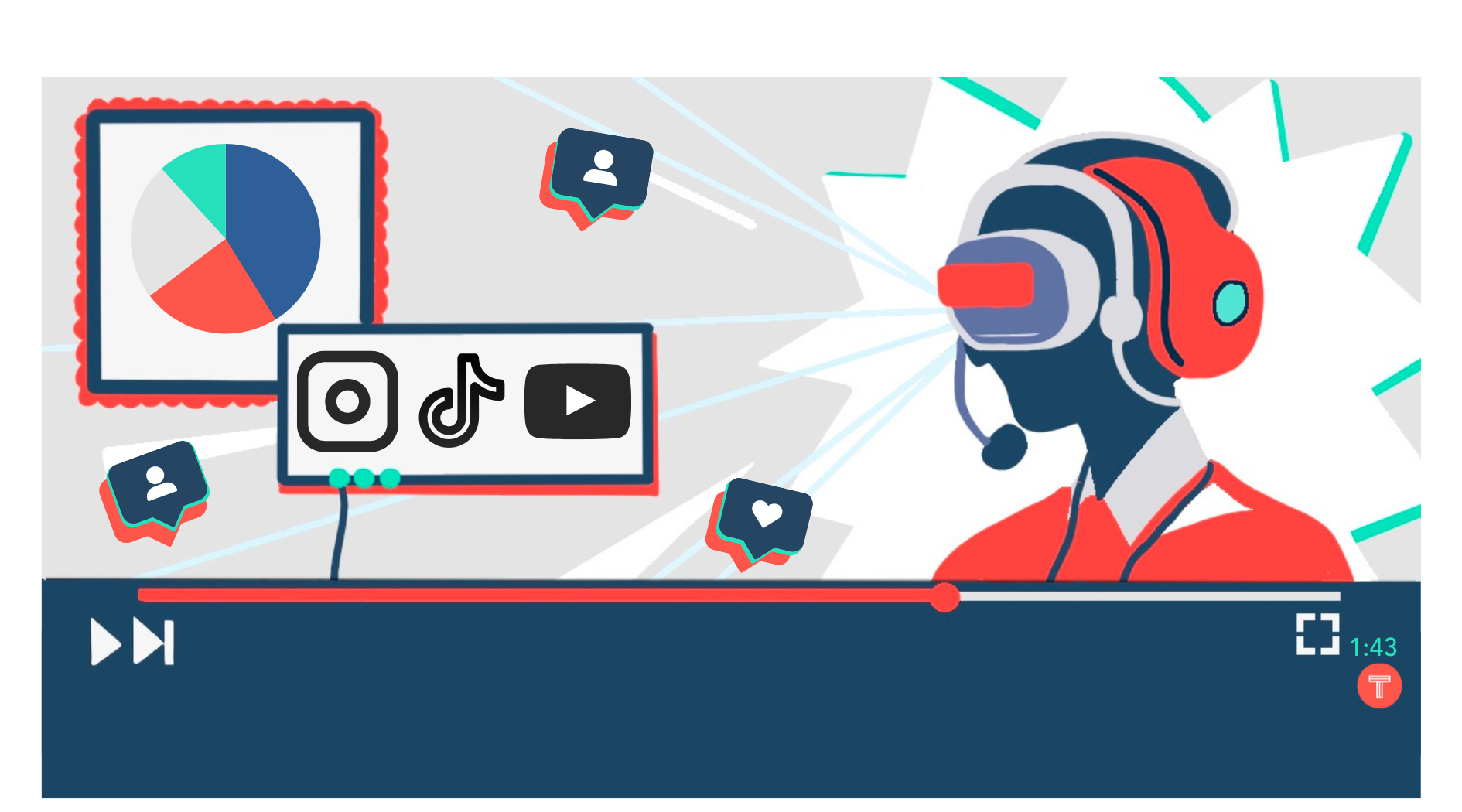Marketing has always been visual.
It started with master marketers like Joe Ades in the street using storytelling and visuals to paint the picture of what life would be like if you owned his potato peeler. Now, it’s a bit more sophisticated—but it is built on the same foundation.
What is Visual Content Marketing?
Visual content marketing uses images and videos to show consumers what a product can do for them. Thanks to social media even the smallest brands have a way to amplify their voice and message.
Social has driven visual marketing through the roof. There are 95 million Instagram photos posted every day. If it took you 30-seconds to read up until this point in this article, more than 30,000 Instagram photos just got posted while you were reading.
And that’s only one platform. With Facebook, Twitter, Youtube, TikTok, and Pinterest garnering their audiences of hundreds of millions of users—visual content marketing is growing by the second.
The question is, how do you create visual content that stands out in a loud, chaotic social media environment?
Visual Content Trends
Visual content marketing has been around for years. You may remember the old L.L. Bean catalogs that used to show up at our doorsteps, Marlboro’s Marlboro Man, and any number of automotive posters that are now yellow with age. These have been replaced by social feed.
There are a few differences between what used to work well in visual content marketing and what works well now.
#1: Company-created content vs. User-generated content
Back in the day, highly produced visual content by companies used to be the only way to create visual content. Nickelodeon created scripted ads of kids using their toys, and Coca-Cola brought in A-list celebrities to take a perfectly timed sip of their soda. Got Milk anyone?
Today, company-created content doesn’t work the way it used to. Visual content created by happy customers is getting much more attention from consumers.
- One-quarter of search results for the world’s largest brands are linked to user-generated content
- Ads based on user-generated content get 4 times higher click-through rates
- There’s an increase of 29% in web conversions when websites feature user-generated content
Modern-day visual content marketing has democratized the content creation process. The most authentic, and meaningful, content is created by the customer.
#2: High-quality content vs. Averagely-produced content
Those Coke commercials used to catch everyone’s attention, but today users care less about huge product budgets and more about what the product can do for them. Consumers are overwhelmed and bombarded by highly-produced advertising.
But, brands don’t need to spend hundreds of thousands of dollars on expensive locations and product shoots.
There are million-dollar companies that just use an iPhone to capture their product photos and other companies that heavily emphasize user-generated content in their marketing channels. High-quality content used to make consumers feel like they could trust a brand, but today 70% of consumers trust online peer reviews and recommendations more than professional content and copy.
These are the foundational trends that the data shows us, but there are also timely trends that can be seen in visual content marketing. For example, bars and restaurants promoted their businesses with the visual content of their packed bars and dining room. Post COVID-19, this is no longer a working content marketing strategy.
Consumers don’t want to see a packed bar. They want to see how they’ll be kept safe if they were to come in for dinner or a drink. Where lots of people used to be the best way to show how loved your restaurant was, showing customers the distance between their table and other tables is much better suited.
As with all marketing, it’s essential to know your audience and relentlessly keep up with their values, goals, and pain points. Part of this is knowing where to post your visual content.
Where To Use Visual Content
Visual content marketing goes far past Instagram. Visual content has to be one of the longest-standing marketing strategies to exist. It’s close to impossible for visual content just to stop working because humans are so visual.
When we scroll Instagram, images and videos make their way to our minds. We decide if we want to keep scrolling or stop and watch more.
When we walk into a hotel, we immediately look around the lobby to get familiar with our new surroundings.
When we drive on the highway, our eyes are drawn to the large images on the billboards around us.
As humans, we love visuals. As marketers, we have to remember this.
You can use visual content on:
- Social Media
- Website
- Screens
- Etc.
The list is endless. As long as you know your customer and what they want to see, you can use visual content to help them learn more about your company, buy your products, and share their experience.
Let’s take a look at visual content examples to get an idea of how you can bring more visual content into your marketing strategy.
Examples of Visual Content
Loews Hotel
Loews Hotel used visual content to get a 62% increase in social engagement, an 85% increase in time spent on their bookings page, and a 4x increase in revenue from brand-site bookings.
Their strategy was to use user-generated content throughout the customer buying journey to do the selling for them. They used UGC on their social media platforms to generate awareness, on their website during consideration, and on their booking pages to make the sale.
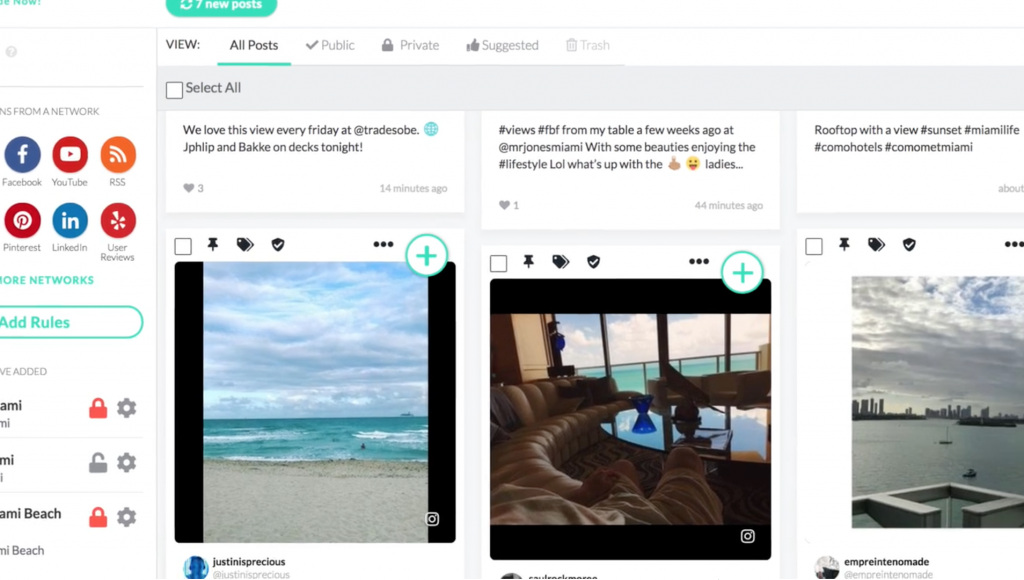
Loews uses TINT to collect, organize, and tag incoming UGC so they can easily use it as needed in their marketing channels. Learn more here.
Once the sale was made, Loews didn’t stop there. They placed screens that displayed UGC in their lobbies of happy customers enjoying their stay at other Loews locations. They also gave customers a chance to be featured on their website and those lobby screens by submitting their photos.
Marie Forleo
Marie Forleo dedicates an entire page on her website, called Success Stories, to customer testimonials. The content is entirely visual, with photos of each happy student and their testimonial written next to them. This content marketing fits perfectly with what consumers have been asking for: show us happy customers and what they have to say about the product.
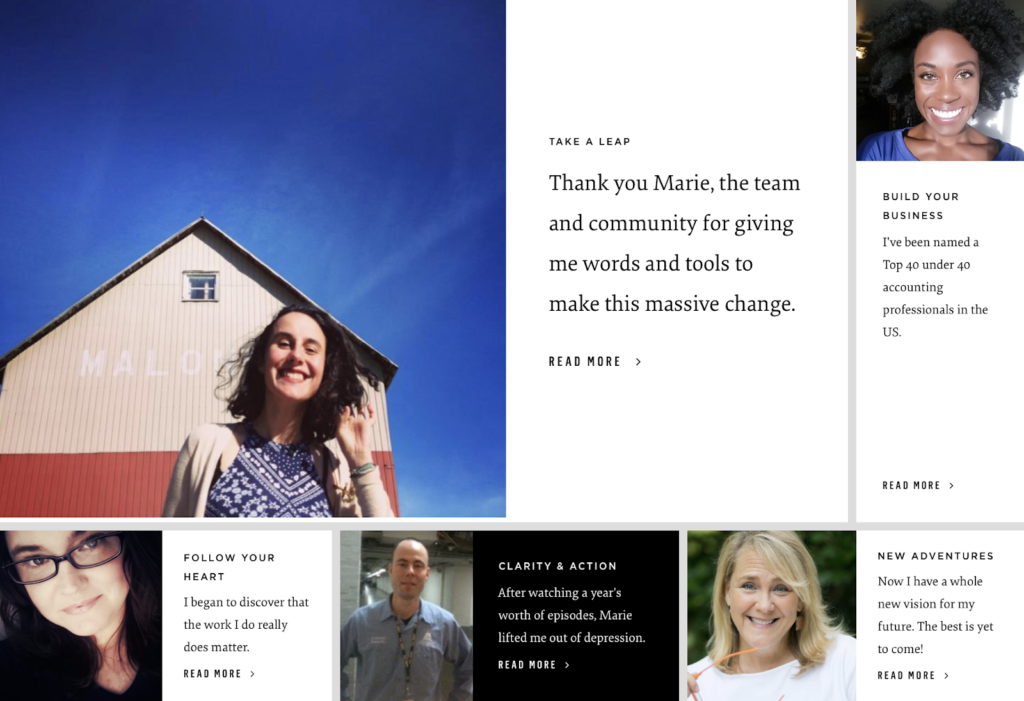
Visualize Value
Visualize Value on Twitter has taken visual content marketing to the next level. Created by Jack Butcher, the account only posts black and white graphics with simple explanations. He knew his customer avatar, and he made the content they wanted to see. Visualize Value has 115,000 Twitter followers and 170,000 Instagram followers.
“Day by day, what you do is who you become.” — Heraclitus pic.twitter.com/1veCA7FsUA
— Visualize Value (@visualizevalue) November 30, 2020
Alfred Coffee
Alfred Coffee, a well-known coffee shop in Los Angeles famous for collaborating with brands like Nike and Kylie Cosmetics, has built its entire brand around visual content. They want to stand out as being shareable, so they design their cafes and coffee cups and sleeves to fit that. If you go into an Alfred coffee shop, you’re bound to see someone take a photo of their tagline, “But first, coffee,” written somewhere on their walls.
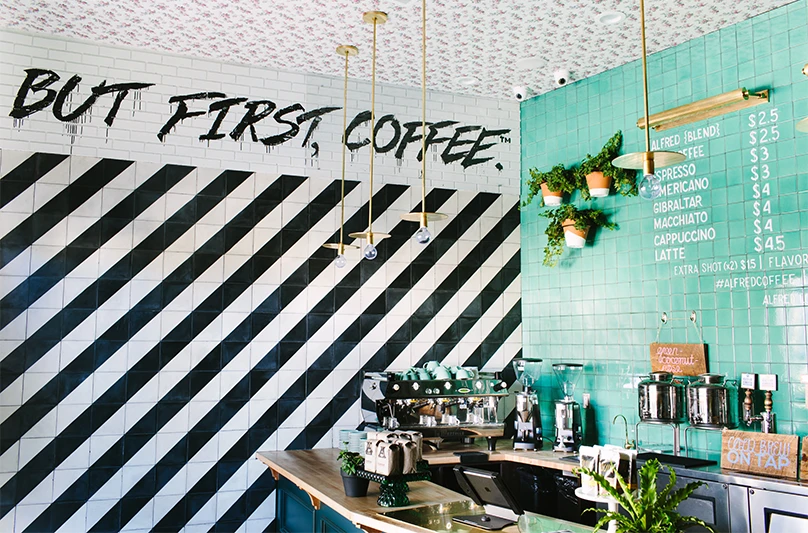
Wrapping Up
Visual content is being posted by the thousands every second, and it’s a marketer’s job to keep up with it. By adding more visual content to your marketing strategy, you’re going to be able to show your customers what to expect from you instead of just telling them.
Joe Ades nailed this down as he sold his potato peelers in the street. If you can put visual content (him peeling potatoes) with a great story that shows a customer what their life is like with their problem and what it could be like without it—you’ve got a winning formula.
The key is to create an endless stream of images and videos from customers you can repurpose across your marketing channels. You can use these strategies to get your customers to create user-generated content and then have TINT help you get the rights to that content so you can use it freely in your marketing strategy moving forward.
Use our Visual Search feature to use machine learning to find the visual content of your brand or products, even if you weren’t tagged in it. You can collect all of that content in your UGC Studio and automatically tag it, so it gets organized based on products, type of visual content, or the part of the buying journey it was created in.
Don’t worry. We won’t mess up your workflow. We integrate with your current marketing tool stack, so adding TINT to your workflow doesn’t disrupt your efficiency.
Ready to start posting visual content proven to get conversions? Schedule a demo with one of our content experts and start your visual content marketing journey today.


